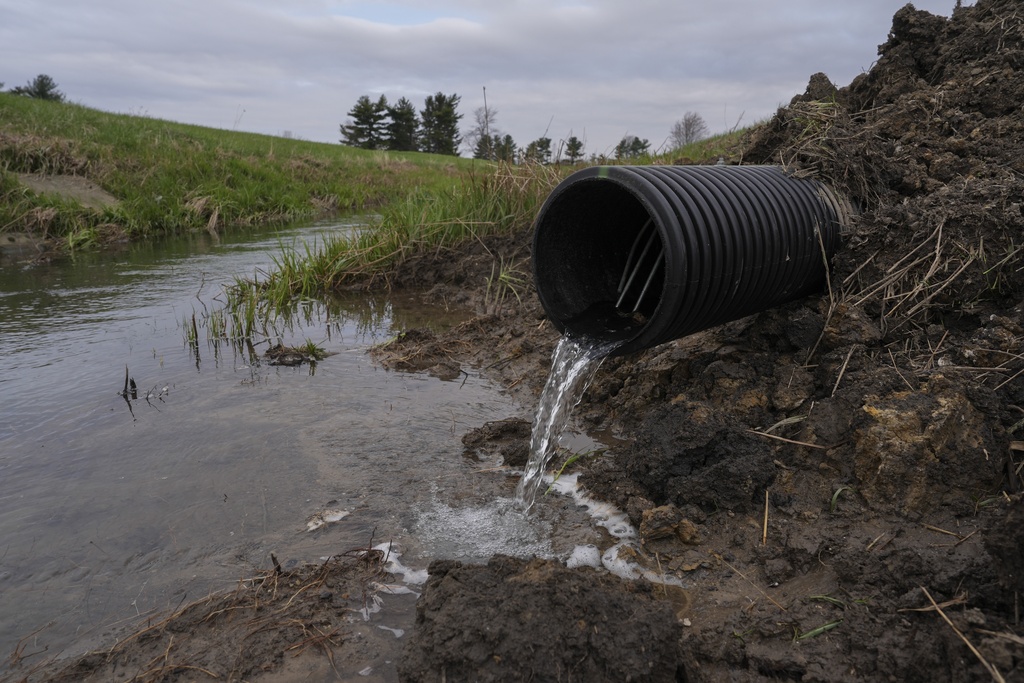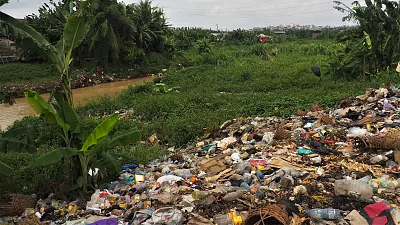In Uganda, a rising tide of plastic pollution is infiltrating agricultural fields, raising significant environmental and health concerns. These plastics, commonly known as buveera, have long been an issue in urban areas like Kampala, where they are littered on roads and block waterways. Now, these plastic bags are increasingly found in rural farmlands, further complicating the country’s struggle with plastic waste.
The surge in plastic usage in agriculture is primarily driven by the growing need for moisture-retaining tarps, packaging for seeds, and other materials vital for modern farming. As climate change intensifies, more farmers are turning to these plastics to protect their crops from unpredictable weather conditions. For instance, thick plastic covers are being used in coffee nurseries, and plastic bags are repurposed for seed planting in fields. While these practices may provide short-term solutions, they are contributing to the long-term pollution of the environment.
The challenge is not limited to Uganda. Globally, the infiltration of plastics into agricultural systems is becoming a widespread issue. According to a 2021 report from the United Nations Food and Agriculture Organization (FAO), agricultural lands are absorbing an increasing amount of plastic waste, with microplastics now considered a significant environmental concern. Studies suggest that the microplastic pollution in soils may exceed that found in oceans, an alarming revelation for both scientists and farmers.
Farmers like Nicholas Kayondo, a crop scientist and farmer near Kampala, have witnessed the impacts of plastic waste firsthand. “We encounter so much plastic because of the factories and bottling companies producing water, juice, and energy drinks,” says Kayondo. “This generates vast amounts of waste that end up on our farmlands, contaminating the soil.”
Despite the environmental risks, many farmers see plastics as essential for crop production, especially as climate change worsens weather conditions. The growing unpredictability of rainfall and rising temperatures make it harder for crops to thrive without the protection that plastic materials provide. Plastics are used not only in moisture retention but also for packaging fertilizers, pesticides, and in seed coating.


However, this reliance on plastic is not without its consequences. Research on microplastics—tiny plastic particles smaller than five millimeters—has shown that they can be absorbed by plants and enter the food chain. The problem is compounded by the fact that plastic degradation over time results in the release of smaller microplastic particles into the environment. This has raised concerns among scientists about the long-term impact of plastics on human health. Studies have linked microplastics to a range of potential health issues, including heart disease and cancer.
One of the most concerning aspects of this issue is that microplastics are now found in human bodies. “We know that microplastics are present in our bodies – in our lungs, in our brains,” says Sarah Zack, a Great Lakes Contaminant Specialist. “The real concern is that toxic chemicals could cling to these microplastics and be transported through the environment, entering the food and water we consume.”
For Ugandan farmers, especially those in remote rural areas, the plastic problem is compounded by a lack of affordable alternatives. Many farmers are unable to afford proper seedling trays and turn to plastic bags as a cheap substitute. While plastics provide immediate relief for farmers, they also exacerbate the accumulation of waste in the soil, which could undermine agricultural productivity in the long term.
As plastic waste continues to accumulate in agricultural lands, it poses a significant challenge to the soil’s health and biodiversity. Experts warn that the continued use of plastics in agriculture will eventually lead to reduced soil fertility, disrupting ecosystems and threatening food security.
Efforts to tackle this problem have been slow. While some initiatives focus on recycling and reusing plastics, less than 10% of plastic waste is recycled globally, meaning the majority ends up in landfills, polluting ecosystems or being incinerated. Despite these challenges, some industry experts are optimistic about the potential for innovation in sustainable farming practices, though they acknowledge that eradicating plastic from agriculture is not an easy task.
The path forward requires a collaborative effort between farmers, policymakers, and the private sector to explore alternatives to plastic and develop more sustainable farming practices. This includes investigating biodegradable options for seed coatings, fertilizers, and irrigation systems. As Uganda faces the dual challenges of climate change and plastic pollution, addressing the infiltration of plastics into agricultural systems is crucial for safeguarding the environment and public health.
In conclusion, while plastics are undeniably beneficial in some agricultural practices, their growing presence in Uganda’s farming landscape and their potential harm to the environment and human health must not be ignored. A careful balance must be struck to protect both the land and the people who depend on it for their livelihoods.
This is a dynamically generated comment by Chinedu Okonkwo.
This is a dynamically generated comment by Ethan Anderson.
This is a dynamically generated comment by Jack Taylor.
This is a dynamically generated comment by Chloe Scott.
This is a dynamically generated comment by Lucas Wright.
This is a dynamically generated comment by Mohammed El-Sayed.